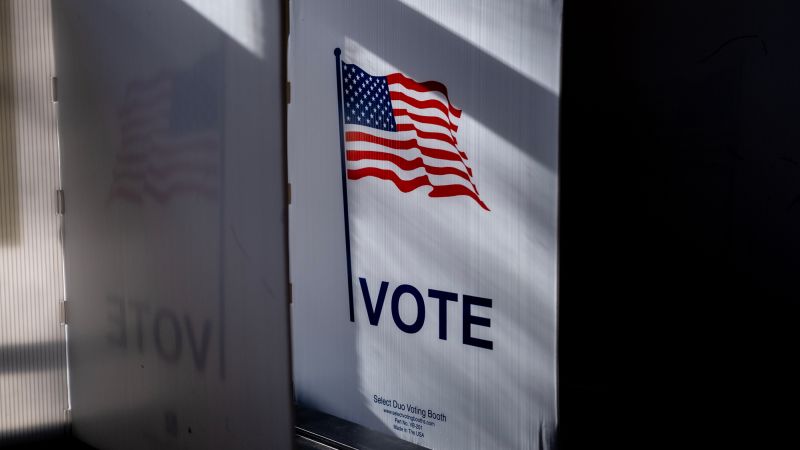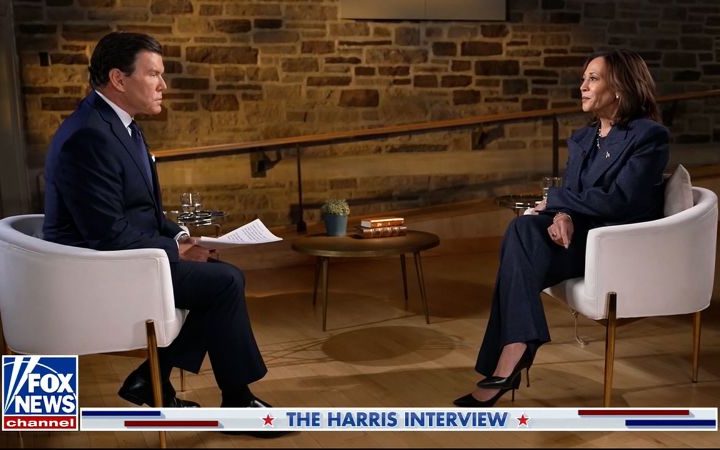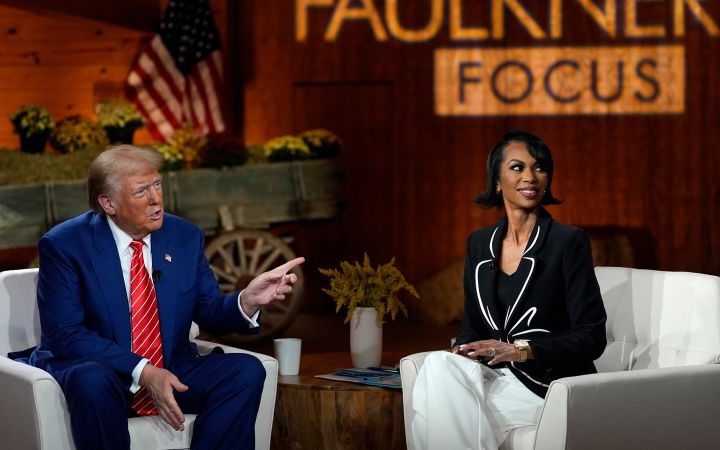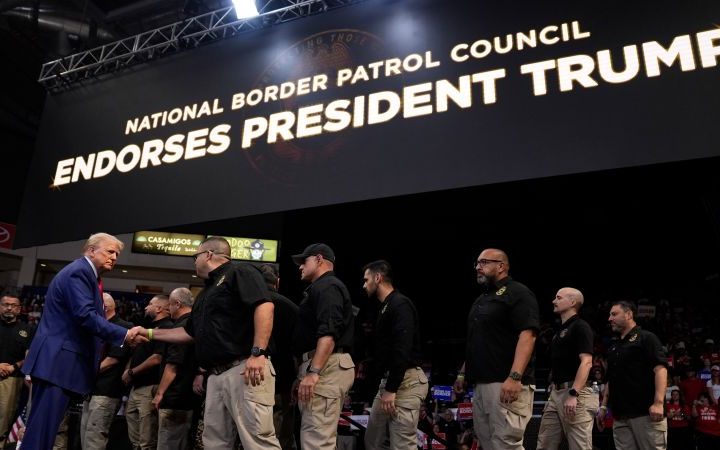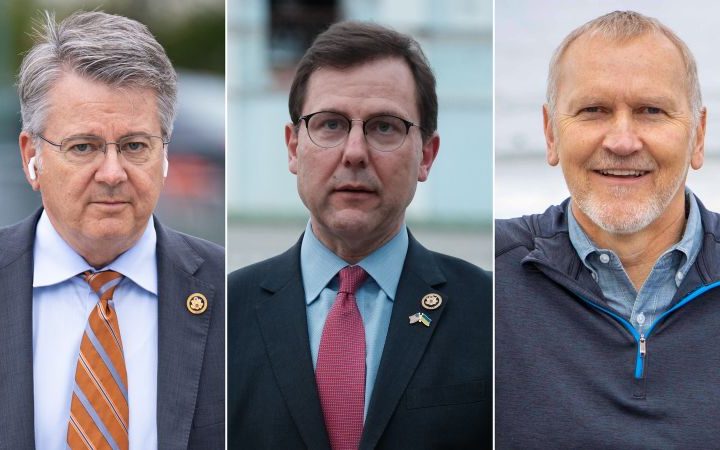A version of this story appeared in CNN’s What Matters newsletter. To get it in your inbox, sign up for free here.
One of the more interesting long-term experiments in the American version of democracy is on the verge of ending, but not before inspiring change elsewhere in the country.
The experiment in Louisiana, which has been ongoing in various iterations for most of the past 50 years, is this: Rather than a traditional party primary system in line with the one Americans use in presidential elections, for nonpresidential offices, Louisiana has given every voter the option of every candidate, regardless of party. If no candidate gets a simple majority, the top two candidates take part in a runoff.
For presidential primaries, on the other hand, Louisiana is among the states that closes its primary off to independent voters.
Louisiana Gov. Jeff Landry, a Republican, has pushed to replace the unique open primary system used for most elections with a closed primary system open only to party members, arguing that it is a matter of fairness to political parties and complaining that Louisiana lawmakers may not have their elections determined until December.
Unwilling to go as far as the full-on closed primary system pushed by Landry, legislators have instead agreed to scale back the open primary system for congressional and some other races. The open primaries will remain for statewide races, including governor.
Other states, including California and Washington, have followed Louisiana’s lead and adopted their own versions of the system. In California, for instance, it’s now commonplace to see two Democrats emerge from an open primary to square off on Election Day.
Changing the system could have a real effect in Louisiana, where the open primary system has verifiably led to less extreme lawmakers, according to Christian Grose, a political science professor at the University of Southern California who has studied the effect of open primaries.
Grose looked at voting records in Congress for states with completely open primaries and compared them with states that still conduct closed primaries and found the states with open primaries produced more moderate lawmakers.
It is not guaranteed that voters will choose a more moderate candidate, but it is a more likely possibility, Grose told me in an email, arguing open systems provide “an opportunity to elect candidates who are less extreme. In closed systems, this rarely happens.”
There are those that argue the opposite, that party leaders have essentially lost control of the primary process, which has led to more extreme candidates.
Republican Party leaders tried and failed to derail Donald Trump’s candidacy in 2016. Now he has essentially remade the party around himself.
Plus, most states, to varying degrees, have opened their primaries to independent voters, even if they do not have a fully open, nonpartisan primary system like Louisiana or California.
Which senators felt comfortable crossing Trump and are still in office?
Grose noted that Louisiana’s senators are both Republican, but one of them, Bill Cassidy, voted to remove Trump from office after the January 6, 2021, insurrection and the other, John Kennedy, did not.
Cassidy was actually only one of seven Republican senators to vote to remove Trump from office during his second impeachment trial.
Of those seven, three have since left office. Another, Sen. Mitt Romney of Utah, has said he will not run for reelection. The remaining three, Cassidy, Sen. Susan Collins of Maine and Sen. Lisa Murkowski of Alaska, are all from states that do not have traditional partisan primaries.
Murkowski was reelected to a fourth term in Alaska’s new ranked-choice voting system in 2022. In that system, voters pick a first-, second- and even third-choice candidate. If no candidate gets to 50%, the candidate with the fewest votes is eliminated and voters who ranked that candidate first will have their vote counted for whoever was their next choice.
That’s the same system by which Alaska elected Mary Peltola as its first Democratic member of Congress in decades (and she made history as the first Alaska Native in Congress). And yet, while Peltola is a Democrat, she has worked with Republicans in the state.
Alaska’s legislature, however, is in the process of trying to undo the ranked-choice system, which was narrowly approved by voters in a 2020 ballot initiative.
Ranked-choice voting is also the system by which New Yorkers picked the Democrat Eric Adams as their mayor.
That’s what happened in Maine in 2016 and Alaska in 2020. Voters in Nevada approved a ranked-choice system once already but must do so again in 2024 for it to take effect.
Meanwhile in Arizona, where Republicans suffered in 2022 by picking more extreme candidates in partisan primaries, there’s an effort to put ranked-choice voting on the ballot in 2024.
The partisan primary system in the US has been cited as one driver of growing partisanship in the US. That’s on display at the national level as Trump consolidates his control over the Republican Party with a message of “retribution” against his opponents if he’s able to win the White House again in 2024.
Adding the voices of independent voters into the primary system is something Trump has been complaining about in New Hampshire.
After Trump romped in Iowa’s caucuses, New Hampshire’s primary could represent the last real chance for former South Carolina Gov. Nikki Haley to put Trump’s third straight Republican nomination in question.
Primaries continue until June, but Haley is now Trump’s only remaining major Republican opponent, and New Hampshire, where most voters are not registered with either political party, represents a unique opportunity for her.
Trump told supporters at a rally in New Hampshire Sunday that the inclusion of non-Republicans in the primary is equal to bringing “liberals and (Joe) Biden supporters” into the Republican process, but that’s probably in large part because polling suggests independent voters in the state prefer Haley.
Gallup tracks party identification in the US. Those identifying as independent first outnumbered Democrats and Republicans back in 1991 and have continued to do so for all but a few years. In 2023, Democrats reached a new low in party identification (27%), the same as Republicans.
The secret, of course, is that most Americans who describe themselves as independent aren’t really. In a follow-up question, they will routinely tell Gallup they either lean toward Republicans or Democrats. Last year, 45% either identified or leaned toward Republicans, compared with 43% who either identified or leaned toward Democrats.
In 2020’s presidential election, 26% of all voters identified as independent, according to CNN’s exit polls, fewer than the portion who identified as either Republicans or Democrats. But in New Hampshire specifically that year, 46% of voters identified as independent.
In New Hampshire’s Democratic primary in 2020, only about half the people who voted said they were Democrats, according to exit polls. Most of the rest (45%) were independents. Sen. Bernie Sanders, the independent from neighboring Vermont, who describes himself as a democratic socialist, won the Democratic primary in New Hampshire that year, but lost the nomination to Biden.
Read the full article here
